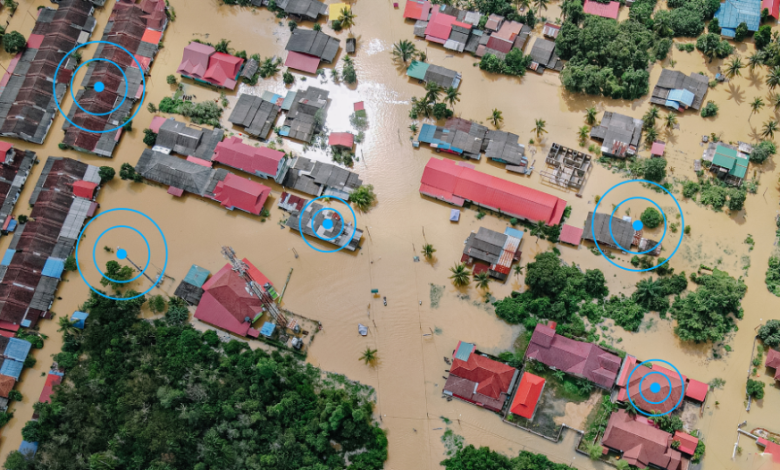
Every year, natural disasters kill an average of 60,000 people globally and cause hundreds of billions of dollars in damages. Yet despite decades of technological advancement, the world’s approach to disaster response remains largely reactive: wait for events to unfold, then mobilize resources after critical damage has already occurred.
This retroactive paradigm is fundamentally flawed in an era where artificial intelligence and sensor networks can monitor, predict, detect, and respond to threats in real-time. The question isn’t whether technology can improve disaster outcomes—it’s why we haven’t fully embraced the solutions that already exist.
The Fatal Gap in Traditional Response Systems
Traditional disaster response operates on a timeline that doesn’t align with how quickly catastrophic events escalate. Hurricanes may provide days of warning, but floods can develop in minutes, earthquakes strike without notice, and wildfires can spread faster than evacuation orders can be issued.
The critical gap lies between detection and response. Even when early warning systems identify threats, the time required to assess situations, coordinate resources, and implement responses often exceeds the window for effective intervention. By the time human analysis concludes that a situation requires emergency action, the opportunity to minimize damage––and more importantly, save lives––may have already passed.
Modern threats require modern solutions that can process information and trigger responses at machine speed rather than human pace.
Intelligent Early Warning: Beyond Weather Reports
The most significant advancement in disaster preparedness isn’t coming from meteorology or geology—it’s emerging from computer vision and pattern recognition systems that can identify developing threats from visual data streams. Powered by AI, these systems don’t replace weather services or seismic monitoring; they enhance them by providing ground-level intelligence that traditional sensors cannot capture.
Take flood monitoring, for example: traditional methods depend on gauges and weather forecasts, while AI-powered visual systems can spot early warning signs—like shifts in water color, debris buildup, or unusual flow—hours before levels hit critical points. That extra lead time can turn a potential disaster into a manageable event.
Similarly, wildfire detection systems that analyze visual feeds can identify smoke plumes or heat signatures in remote areas where traditional sensors don’t exist. Rather than waiting for fires to grow large enough to trigger satellite detection, these systems can alert authorities to small fires while they are still containable.
The Integration Challenge: Working with Existing Infrastructure
Rather than requiring a complete infrastructure overhaul, the most effective disaster response technologies enhance existing emergency management capabilities. Schools, municipal buildings, and critical facilities typically already have camera systems, communication networks, and alert mechanisms in place. The breakthrough comes from making these existing systems more intelligent—analyzing feeds from previously installed cameras, integrating with current communication systems, and working alongside established emergency protocols—rather than replacing them entirely.
This integration approach also addresses the fundamental resource constraints that many communities face when considering disaster preparedness improvements. Rather than choosing between basic safety measures and advanced technology, communities can enhance their current systems incrementally, building sophisticated capabilities over time while preserving previous investments.
Real-Time Intelligence in Critical Moments
The true power of AI-driven disaster response lies in its ability to process multiple data streams simultaneously and identify patterns that human observers might miss. When traditional communication networks fail during major disasters, visual analysis systems can continue operating independently, providing critical situational awareness to emergency responders even when other information sources are unavailable.
AI systems can track the movement of debris, identify blocked evacuation routes, and monitor the structural integrity of buildings during disasters—all while emergency personnel focus on rescue and relief operations. This parallel intelligence gathering ensures that response efforts are based on current conditions rather than pre-disaster assumptions, allowing teams to pivot when time is most of the essence.
The technology also enables more precise resource allocation. Instead of deploying emergency resources based on predicted impact zones, AI systems can identify actual damage patterns and direct assistance to areas where it’s most needed. This precision reduces response times and maximizes the effectiveness of limited emergency resources.
Predictive Capabilities: Anticipating Cascade Effects
Perhaps the most valuable aspect of AI-powered disaster response is its ability to predict secondary effects that often cause more damage than initial events. Earthquakes trigger landslides, hurricanes can cause dam failures, and wildfires often lead to mudslides. Traditional response planning addresses these possibilities generically, but AI systems can assess specific risks based on current conditions.
When AI systems detect early indicators of potential secondary disasters, they can automatically trigger preventive measures or alert authorities to take preemptive action. This proactive capability transforms disaster response from damage mitigation to damage prevention.
Global Accessibility: Democratizing Advanced Preparedness
One of the most promising aspects of modern disaster response technology is its accessibility. Advanced AI capabilities no longer require supercomputing resources or specialized technical teams. Edge computing allows sophisticated analysis to run on standard devices, and cloud-based systems provide access to advanced algorithms without local infrastructure requirements.
This accessibility is particularly important for developing regions that face the highest disaster risks but have the fewest resources for advanced preparedness measures. Communities that couldn’t previously afford comprehensive early warning systems can now implement AI-powered solutions that provide enterprise-grade capabilities at a fraction of traditional costs.
The democratization of these technologies also creates opportunities for global cooperation in disaster response. Communities can share detection algorithms, response protocols, and lessons learned, creating a collective intelligence that benefits everyone.
Human-AI Collaboration in Crisis Management
The most effective disaster response systems don’t replace human decision-making—they enhance it by providing better information faster. AI excels at pattern recognition and data processing, while humans excel at contextual understanding and strategic thinking. The optimal approach combines these strengths rather than viewing them as competing alternatives.
Emergency managers equipped with AI-generated insights can make more informed decisions about resource deployment, evacuation timing, and risk communication. The technology serves as a force multiplier that allows experienced professionals to extend their capabilities across larger areas and more complex scenarios.
This collaboration model also addresses concerns about over-reliance on automated systems. AI provides recommendations and alerts, but human judgment remains central to response decisions.
Building Resilient Communities Through Smart Infrastructure
Looking ahead, the integration of AI and IoT technologies into disaster preparedness represents more than technological advancement—it’s a pathway to fundamentally more resilient communities. When every camera can serve as an early warning sensor, when every connected device contributes to situational awareness, and when response systems can adapt in real-time to changing conditions, communities become inherently more capable of protecting themselves.
The goal isn’t to eliminate disaster risks—that’s impossible. The objective is to build systems that minimize the human, environmental, and economic costs when disasters inevitably occur. By transforming existing infrastructure into intelligent early warning networks, we create communities that are prepared not just for the disasters we expect, but for the ones we haven’t yet imagined.




